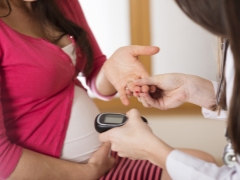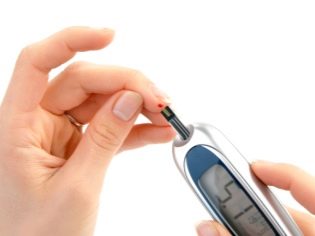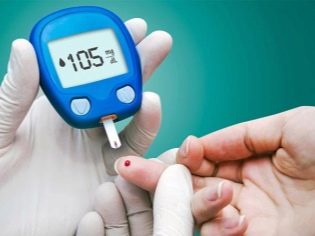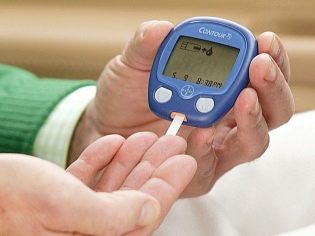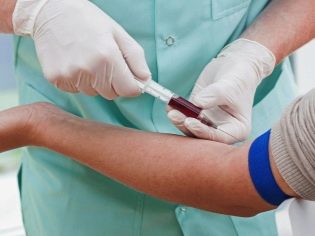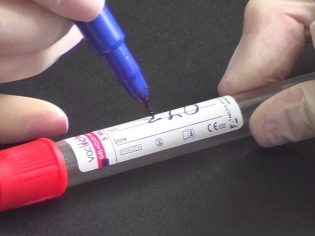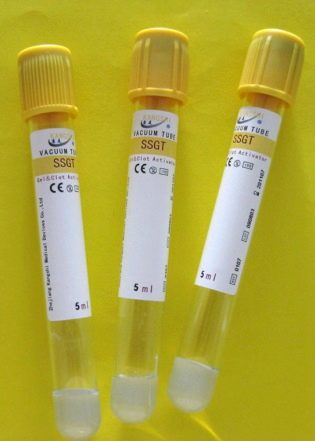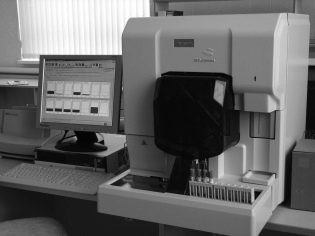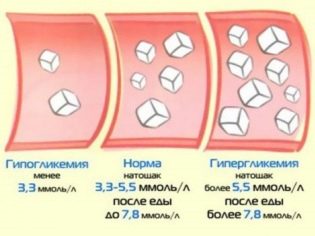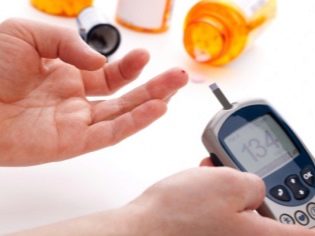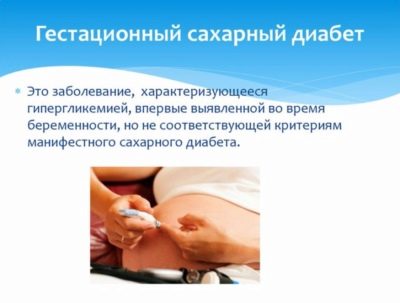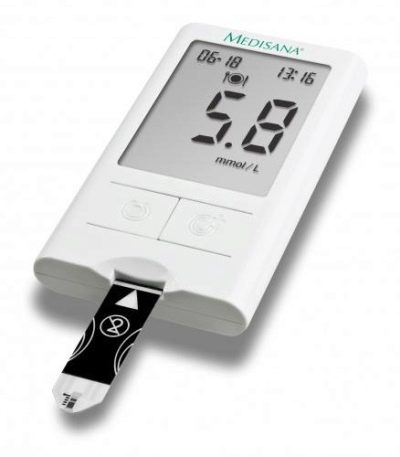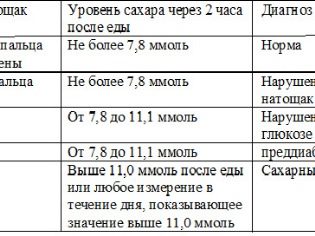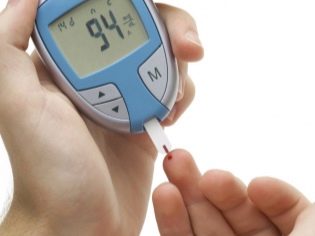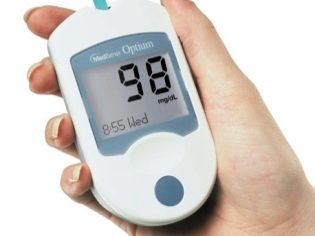Glucose Tolerance Test during Pregnancy
Pregnancy is a special condition for the female body. The changed hormonal background contributes to the fluctuation of the level of glucose (sugar) in the blood even in quite healthy future moms. This article will help women understand what a glucose tolerance test is and what it is for.
What it is?
For the normal functioning of the body of a pregnant woman and her unborn baby is very important a constant level of blood glucose. This substance is involved in all metabolic processes. The work of muscle cells and the brain directly depends on the sugar content in the blood.
Pregnancy is the time when a variety of hormones “rage” in the female body. This is a truly unique period, as a large number of completely new hormonal substances appear in the peripheral blood. This condition can lead to the fact that the endocrine system begins to work in a "special mode". It contributes to a significant change in the level of certain hormones and biologically active substances. This situation also applies to blood glucose.
High levels of sugar in peripheral blood are dangerous to the fetus. If there are signs of hyperglycemia (elevated glucose) in the blood of the future mother, this may lead to the development of diabetes or other endocrinological pathologies in her and her baby.
The glucose tolerance test (GTT) is a unique study that allows you to establish accurate levels of glucose in the peripheral blood have a future mom. He is prescribed to all pregnant women with certain medical indications to establish the first signs of gestational diabetes. This pathology appears for the first time only during pregnancy and is associated with impaired hormonal levels.
Conducting a glucose tolerance test during pregnancy makes it possible to identify even the “hidden” signs of an increase in blood glucose that are available to the expectant mother.
When is analysis required?
The glucose tolerance test should be performed on all pregnant women. Endocrinologists and obstetricians and gynecologists from different countries say that the incidence of gestational diabetes is increasing steadily every year. This explains the importance of such a test in future moms.
It should be noted that it is quite easy to carry out. Glucose tolerance test is very affordable and does not require any complex devices for its conduct.
Doctors distinguish additionally several clinical situations when such a study is extremely necessary.
Contraindications for
The glucose tolerant test, like any other laboratory test, has not only indications for its conduct, but also certain limitations. Many moms are afraid of this study and try to refuse to pass it. Doctors do not get tired to explain to them that you should not be afraid of this laboratory test. He will not bring any harm to either the future mom or her baby. Ill with diabetes after the glucose tolerance test can not be.
There are several clinical situations where this study is not conducted. In this case, the risk of possible adverse effects increases significantly. Many of these clinical situations are temporary. In this case, the test can be somewhat postponed.
Do not conduct research with:
- acute course of infectious diseases. Severe inflammation in the body - a significant contraindication to perform this method. In this case, it is possible to carry out the glucose tolerance test after mommy recovers from a viral or bacterial infection;
- gestational age at 32 weeks. The last trimester of carrying a baby is not the best time to conduct such a test. The risk of false positives during this period is extremely high. In this case, the screening of diabetes mellitus and various disorders of glucose metabolism is carried out at the mother and her baby after the delivery;
- exacerbation of chronic or acute pancreatitis. This pathological condition is accompanied by severe functional disorders arising due to inflammation of the pancreas. In the acute period of this disease in the blood, not only does the number of biologically active enzymes increase, but the content of glucose and insulin changes significantly. It would be better to conduct a glucose tolerance test after subsiding such an attack;
- some diseases of the endocrine system. Severe Cushing's disease, clinically active hyperthyroidism, acromegaly - are medical contraindications for the study;
- prolonged forced use of certain drugs. Taking glucocorticosteroids and estrogens can lead to false positive results. This may distort the correct interpretation of the analysis.
Currently, in any pharmacy near the house, quite a lot of different devices are sold - glucometers. They reveal the level of sugar in capillary blood. Such a device is necessary for every family. He will also be needed in cases where someone from close relatives has diabetes.
Reviews of some moms on the Internet indicate that they tried to conduct a glucose tolerance test on their own. It should not be done immediately for many reasons! Such a home study will be inaccurate and will not give a reliable result after holding. It is also worth noting that in some cases it is extremely dangerous to hold it at home. Perform glucose tolerance test is necessary only in a medical institution under the supervision of specialists.
Uncontrolled conduct of such a test may even lead to the fact that it is necessary to urgently call the emergency medical team. Some moms make a significant mistake, that they can replace the introduction of glucose to eating chocolate or a normal meal. This is a big misconception. In this case, to achieve the required accurate results is almost impossible.
Technique
To conduct this laboratory study can be in different ways. The standard method is an oral test with 75 g of glucose. During the study, a pregnant woman should be in a medical institution for 2-2.5 hours. This provides a feature of the technology of this study.
Quite often, a pregnant woman is asked to sit in the hallway, if the examination is carried out in an ordinary polyclinic. Frequent clinics offer visitors more comfortable conditions. During the analysis, the future mom can expect in a special room. For a more comfortable pastime there is usually a TV there. It’s better to pass the time between taking blood for analysis, all the same, by reading a book.
Glucose tolerance test will be conducted in several stages.The first time blood is taken from a vein in the morning. To do this, the expectant mother must come to the clinic strictly on an empty stomach. It is strictly forbidden to eat immediately before performing the study.
Doctors set the required time interval, for how many hours you can not eat food before the analysis. As a rule, it is from 8 to 14 hours. This is the necessary time when you can get a reliable result in the future. Longer fasting is not required, as this condition can lead to a pronounced decrease in glucose in peripheral blood.
The main test procedure is that a pregnant woman will be offered to drink a glass of glucose. It tastes sweet, very pleasant. Currently, there are various glucose metabolites that can be used to conduct this test. One such remedy is monohydrate. If glucose metabolites are administered orally, by injection, the dosage in this case changes significantly.
After a pregnant woman drank a glass of glucose, blood is taken to determine glucose from her 4 more times, every 30 minutes. To evaluate the result, all obtained values are used in the future. In some cases, it is possible to conduct research in a different way.
At the same time, venous blood is taken for analysis immediately and 2 hours after the first intake. It is important to note that in this case false positive results may appear.
In some laboratories, a bit of lemon juice is added to it to improve the taste of such a diagnostic sweet solution. This does not affect the result, but can significantly reduce nausea during this study. Some moms come to this clinic, take a slice of lemon. Citric acid is especially good for expectant mothers who have severe gestosis or an emetic reflex.
Currently, for analysis, capillary blood is not taken from the finger. A more reliable result helps to get venous blood. It shows a more accurate concentration of glucose in the body. In capillary blood, mixing with lymph occurs, which results in a somewhat unreliable result.
Blood sampling from a vein is now very safe. Many future moms suffer this research rather calmly. Blood sampling from a vein is carried by them, as a rule, much easier than frequent finger punctures. Thin needles, which are used to perform this analysis, do not bring any pain.
For the study used special vacuum tubes. They allow you to quickly take quite a bit of venous blood for analysis. This feature is due to the difference in pressure between the inside of the tube and the external environment.
The safety of blood sampling with such vacuum syringes is quite large, since only disposable medical instruments are used.
Inside the tubes, in which blood is drawn, there are special chemicals that prevent blood oxidation. These tools also help to maintain a certain concentration of glucose for some time. Their use allows you to get a fairly reliable result. In some situations, it is possible to conduct the simultaneous determination of the level of glycated hemoglobin.
To obtain the result, a test tube with venous blood is placed with a special apparatus - analyzer. Modern instruments used for this test are now fully automatic. They allow you to get not only accurate, but very reliable results. However, in some cases technical errors are still possible. Usually this happens more often in case of violation of the blood sampling technique by the laboratory technician.
Training
Before conducting this laboratory analysis, all future moms will be given recommendations. Compliance with them is necessary to obtain a more reliable result. It should be remembered that if the obtained indicators of the glucose tolerant test prove to be unreliable, then the doctor will prescribe a second study.
In order to avoid this, it is necessary to carefully conduct the necessary preparation before conducting the test.
A variety of factors can affect accurate results. The use of even a small amount of alcoholic beverages can provoke a distortion of the result. To obtain more accurate values on the eve of the study, you should also exclude the use of any alcoholic medicinal tinctures. If a pregnant woman is abusing cigarettes, then it should be noted that smoking on the eve of and immediately before carrying out such a diagnostic procedure is strictly prohibited.
Acute infectious diseases or exacerbations of chronic diseases of internal organs, accompanied by fever, lead to the fact that the results of the study are significantly distorted. 2-3 days before carrying out this laboratory test, it is necessary to exclude physical exertion. Even the banal cleaning of an apartment can lead to the fact that the results can be significantly distorted.
If the study is carried out in the hot season, the result of such a test may be distorted. Dehydration of the body also often provokes a distortion of the results.
In order to avoid this, prior to the glucose tolerance test, the future mom should follow the usual physiological drinking regimen.
Severe psychoemotional stress a few days before laboratory testing can lead to distorted results. In this case, both false-positive and false-negative results can be obtained. Doctors recommend a pregnant woman to perform this test. Do not be nervous and try to be as calm as possible.
Analysis rate
The elevated glucose-tolerate test (PGTT) can occur in various clinical situations. If at the time of the study, persistent increases in the level of glucose were detected, then the test should be additionally rechecked. Only then can doctors diagnose gestational diabetes. Donate blood for research should also be several times, as required by the method of performing this test.
Gestational diabetes - This is an extremely unfavorable disease with a progressive increase in adverse symptoms. False overdiagnosis in this case can lead to the fact that a pregnant woman prescribed drugs that will lead to undesirable effects. Only the endocrinologist establishes the diagnosis of gestational diabetes. To do this, he can send the future mom to the laboratory for delivery and other auxiliary laboratory tests.
Normally, fasting blood glucose values should be less than 5.1 mmol / l. After 60 minutes, the sugar level should not exceed 10 mmol / l. 2 hours after the study, its blood values in a healthy pregnant woman do not exceed 8.5 mmol / l.
Decoding results
Doctors identify several criteria that indicate the presence of signs of gestational diabetes in the expectant mother’s body. In this case, fasting glucose is in the range from 5.1 to 6.9 mmol / l. Already in 55-60 minutes, its values rise above 10 mmol / l. After a couple of hours, indicators of sugar in peripheral blood reach values from 8.5 to 11 mmol / l.
There are also clinical situations where the formulation of gestational diabetes is somewhat easier. In this case, the fasting glucose level should be more than 7 mmol / l. After consuming the sugar solution, the blood sugar level exceeds 11 mmol / l.Doctors can regard this condition as a vivid manifestation of diabetes.
If the increase in the glucose tolerance test occurred only during pregnancy, then this pathological condition is called gestational diabetes. It is important to note that identified abnormalities may return to normal after birth. Such a transitory condition should be a reason for mommies to monitor blood sugar periodically regularly throughout their lives.
To confirm the diagnosis requires the mandatory determination of glycated hemoglobin. This indicator shows the dynamics of blood glucose over several months. Currently, experts in many countries use this indicator to verify the established diagnoses of diabetes. Normally, the reading of glycated hemoglobin should not exceed 6.5%.
Such combined tests are necessarily carried out to all expectant mothers who are at high risk for the development of diabetes. During the entire period of pregnancy, these studies can be carried out several times. This allows for more accurate results. After delivery, glycated hemoglobin levels are also determined and peripheral blood glucose is assessed.
If the indicators are normalized, the diagnosis of diabetes mellitus is excluded.
If mommy is at high risk for possible appearance of hyperglycemia, then the study with sugar load should be carried out at 24-28 weeks of gestation. A study on these dates is the best screening for diabetes. In late pregnancy, it is much harder and more dangerous for the fetus to detect abnormalities.
If the test at the future mommy shows a significant excess over normal indicators, then she will definitely be assigned a special therapeutic food. It significantly limits the daily intake of "fast" carbohydrates. Eating buns, candy and chocolate for a pregnant woman in this case is strictly prohibited.
An alternative to such dangerous carbohydrates can be quite healthy fruits. However, it should be remembered that they contain a fairly large amount of fructose - natural sugar. Consume them should be dosed.
Sweet carbonated drinks, as well as packaged juices from the daily ration of the future mom, who has signs of gestational diabetes, are completely excluded. The best drinks in this case will be plain water, as well as unsweetened compotes and fruit drinks, boiled at home from fruits or berries.
The whole further period of pregnancy of the future mother, who has signs of gestational diabetes, takes place under the obligatory control of the endocrinologist. To identify the dynamics of the disease in a pregnant woman, blood is taken several times to determine her sugar level.
The prescription of glucose-lowering drugs in this case, as a rule, is not carried out. Such drugs are usually prescribed for severe and poorly controlled course of a given pathological condition.
Oh, how to do the glucose tolerance test during pregnancy, see the next video.
